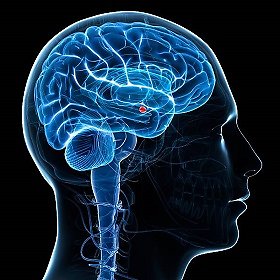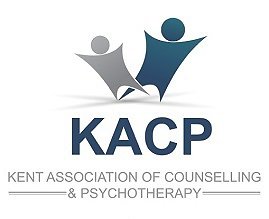About Counselling
The first step
A Counsellor’s Duties Include:
- Providing you with professional and respectful care
- Honouring the trust you place in us.
- Working with you in a non-judgemental dignified way, respecting any social, cultural sexual or physical differences you may have.
- To respect your confidentiality, unless we become aware that you are contemplating causing serious harm to yourself or to others.
The Counselling Process
A counsellor's responsibility is to provide a therapeutic structure to help facilitate you in exploring matters that cause concern. This therapeutic process encourages a deeper sense of personal awareness and understanding enabling you to recognise the changes you may choose to make for yourself
If you decide to proceed we will agree to a contract together covering the day, time your goals and your fee. We will have fifty minutes to an hour together usually on a weekly basis and will regularly review progress.
'Ask Kathleen' is a confidential telephone and email information and guidance service run by the BACP for clients who have questions or concerns about their experience of counselling. email kathleen.daymond@bacp.co.uk or phone:01455 883344
"All they had in them was themselves but they would keep going until they found what was in them to find"- Russell Hoban: Turtle Diary
About CBT
CBT entails homework assignments, consisting of diary keeping, various worksheets and devising and practising experiments. In this way clients are encouraged to maintain a rational perspective becoming their own detective, critically evaluating their own initial reactions, thoughts, feelings behaviour and physical sensations.
CBT has embraced the notion that it is not the events themselves that trigger emotional and behavioural responses, but the client's interpretation of those events.
CBT emphasis what is called thinking errors and defines and works with three levels of thinking patterns that at each level can undermine a client, limiting their ability to cope with difficulties. At the most accessible level, we find our automatic negative thoughts (NATs) it can be enough for many clients simply to identify and challenge their NATs for symptom relief to occur.
At a slightly deeper level of our cognitions particularly when we are distressed, we may be familiar with recurring themes expressed as our beliefs rules and assumptions which may be dysfunctional. These assumptions called cognitive errors, with awareness motivation and practising explicit techniques can be challenged and changed.
At a deeper level still, probably out of awareness we find our core beliefs or schemas, which are deep routed generalised statements about ourselves, others and the world. These core beliefs are formed in response to our early life perceptions and stimulate our responses today. Core beliefs are learned they are not intrinsic, however, because they are ingrained they will take far longer to challenge. As a client begins to tackle their negative and dysfunctional assumptions their core beliefs may gradually be challenged and change may take place at a fundamental level.
Clients are empowered by consciously, actively employing their own resources, learning and practising specific and proactive techniques and skills that become internalised and can be called upon to help prevent further relapse.
We are likely to be more aware of and troubled by our emotions and our behaviour and far less alert to how our thinking may be influencing our difficulties. Maintaining a rational perspective may also initially pose a huge challenge for clients experiencing extreme distress. CBT requires effort, time, commitment, motivation, education reflection and insight. CBT, unlike other talking therapy approaches, involves the client being encouraged to consciously become pro-active in their own treatment plan within and outside of the therapy room. Doing things differently can be a risky prospect, however, those fears are usually unfounded and the rewards outweigh any initial apprehension.
EMDR and Trauma
What is Trauma
"By trama, we could understand a situation where a person is completely helpless, completely powerless, at the mercy of the event, which they cannot influence." (Luise Reddemann, 1999)
DSM-1V definition:
"A traumatic event is an event that a person has experienced, witnessed, or was confronted by that involved actual or threatened death serious injury, or a threat to the physical integrity of self or others."
ICD-10 definition:
"Trauma arises as a delayed or protracted response to a stressful event or situation (of either brief or long duration) of an exceptionally threatening or catastrophic nature, which is likely to cause pervasive distress in almost anyone."
After a traumatic event, people are often overwhelmed by the experience. "Normal" reactions such as fear, anger or sadness turn into panic, exhaustion and desperation. Aside from possible pathological reactions such as suicide, addiction, changes in personality and psychosomatic disorders, people also often develop PTSD (posttraumatic stress disorder) with the following criteria:
- traumatic experience.
- delayed onset of symptoms (days or months after the traumatic experience)
- intrusions and distressing memories of the trauma, e.g., nightmares, flashbacks
- evasive behaviour: people, situations or places that could remind one of the trauma are avoided, which can be very restricting to the life of the individual
- persisting psychological agitation, hyper-arousal, vegetative arousal, with various consequences, e.g., sleeping disorders, startle response, concentration problems, trembling, restlessness, fits of aggression, anxiety
- persisting feeling of numbness and blunted emotions; indifference
- symptoms persist for longer than one month
Normally experiences are processed and stored by the brain and, if fragmented, repaired. In the case of shock and trauma, our fight flight or freeze responses are activated and the connection between the emotional and cognitive brain is interrupted and over-whelmed. The cognitive brain is either wholly or partly cut off from the emotional brain. In this state of emergency, in the moment of danger, it is completely unimportant, inappropriate and impossible to search for a logical explanation for the traumatic situation, to integrate it chronologically, or even to express it in words.
How EMDR Works
EMDR influences the neural pathways, allowing these networks to link with each other re-evaluating images cognitions and emotions causing spontaneous insights and subsequent changes in perspective as bi-lateral connections are formed. Thereby initiating the self-healing process.
EMDR does not require the client to talk extensively about their trauma, but only to focus on it whilst working with their therapist
The client repeatedly focuses for short periods of time simultaneously on their inner experience and traumatic memories as well as on bilateral stimulation, primarily through guided eye movements, or, increasingly, with tactile or acoustic stimulation, led by the therapist.
Through bilateral stimulation, both brain hemispheres are activated and synchronised in relation to a traumatic event. Impulses are sent alternatively to the left and right brain hemispheres. The previously split and unconnected networks are reconnected and recognised by the cognitive brain as "the past". The fragmented memory is gradually transformed into a whole memory. 'Emotional brain' and 'cognitive brain' are now both active and linked concerning the information around the traumatic event.
This is why after a few EMDR sessions clients perceive the trauma as belonging to the past and no longer to the present.
Interestingly when processing the events of the day during REM (rapid eye movement) phase of sleep, eye movements are carried out automatically - both a searching and processing function.
EMDR causes neural changes, and in so doing initiates the self-healing and self-development processes. EMDR does not only facilitate the accelerated processing of traumatic memory fragments but also allows cognitive restructuring, eg., a re-evaluation of experience as well as changed attitude regarding one's self and one's own resources.
Indications for EMDR
EMDR's successful results with trauma victims have led to its application to a wide range of disorders:
- Fear and panic attacks, phobias
- Traumatic experiences and related posttraumatic stress disorder (e.g., from an accident, sexual assault, death of a loved one, separation, loss of employment, retirement, bullying)
- Excessive grief reactions
- Sleep disorders
- Addiction / substance dependency
- Pain /chronic pain
- Psychosomatic disorders
- Dissociative disorders
- Sexual dysfunction
- Self-esteem issues
- Performance anxiety, exam fears
Contraindications - Eye conditions
- Organic brain disorders
- Ego weakness
- Current psychotic symptoms
- Low motivation levels for therapy
- Poor ability to cope with physical stress
Further information can be found EMDR Association UK and Ireland
Recommended reading The Body Keeps The Score (Brain, Mind, and Body in the Healing of Trauma) Bessel Van Der Kolk, M.D. Publisher Penguin Books
A short YouTube video
Fable of the Porcupine
"It was the coldest winter ever - many animals died because of the cold. The porcupines, realizing the situation, decided to group together. This way they covered and protected themselves; but the quills of each one wounded their closest companions even though they gave off heat to each other. After a while they decided to distance themselves from each other and they began to die, alone and frozen. So they had to make a choice: either accept the quills of their companions or disappear from the Earth. Wisely, they decided to go back to being together. This way they learned to live with the wounds that were caused by the close relationship with their companion, but the most important part of it, was the heat that came from the others. This way they were able to survive." -
Source unknown










